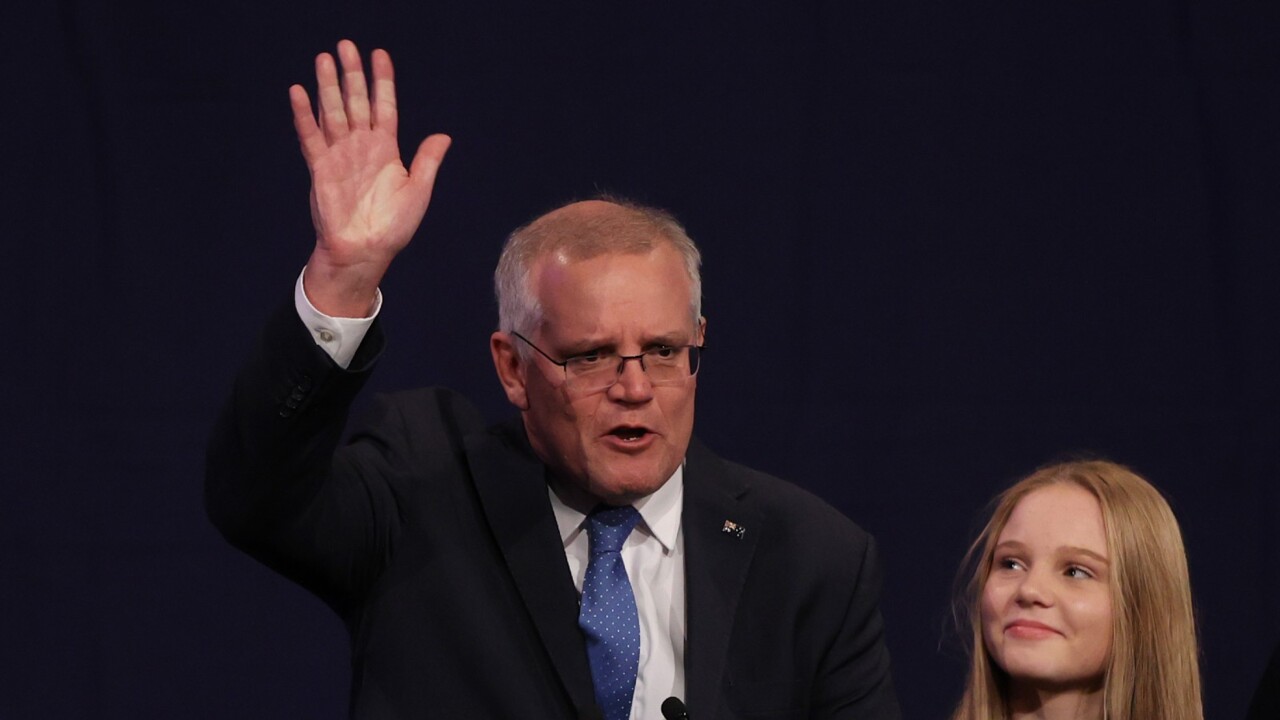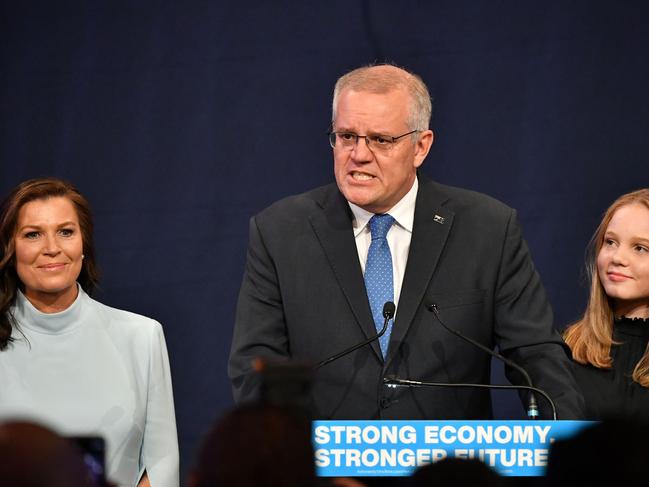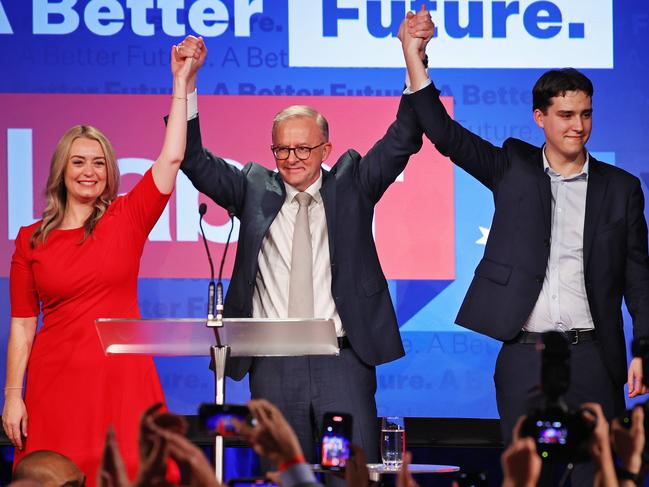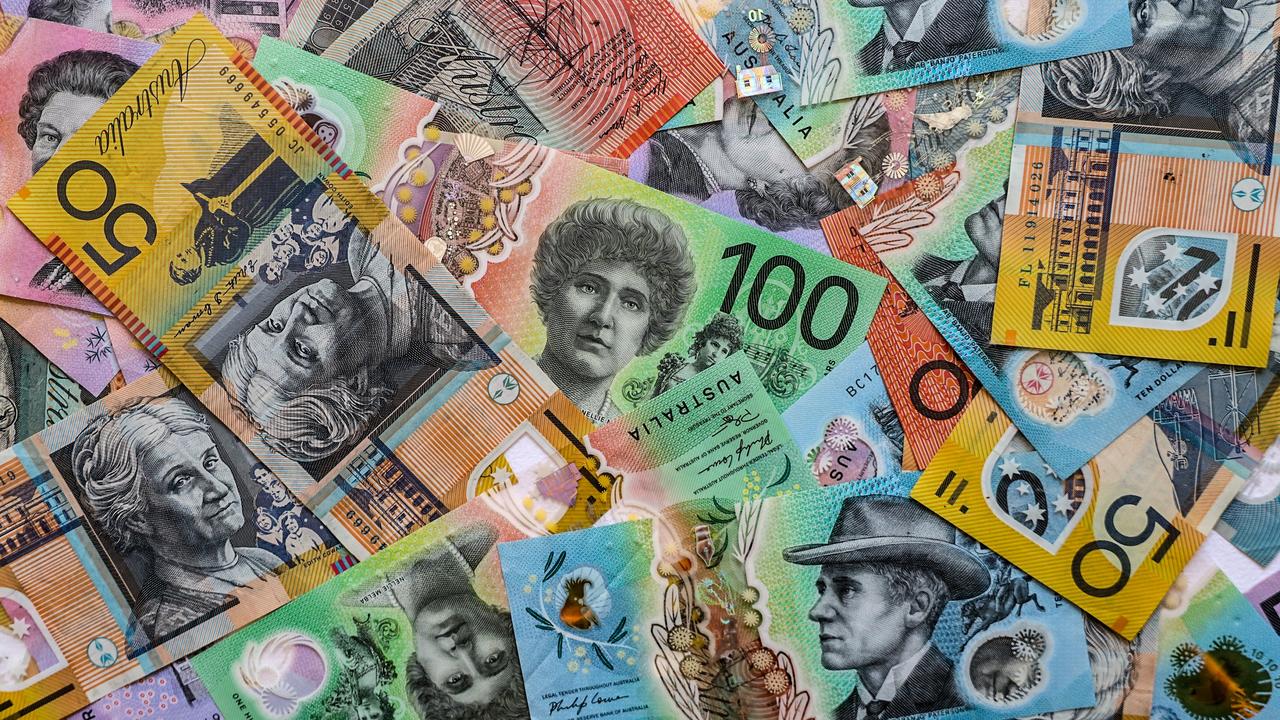Peta Credlin: Right way to save what's left of the Libs
Now that the Morrison government has slipped out of office, the Liberals need to identify where the rot started before rebuilding, writes Peta Credlin.

Now that the Morrison government has slipped out of office — likely losing seats both to Labor and green independents, and maybe even the Greens — it will be important to identify where the rot started.
The government, originally elected in 2013 with a two-party preferred vote to rival John Howard’s in 1996, greater than all the wins of Hawke, Keating and Kevin07, had very clear and distinct policies.
But that policy clarity was lost, first when Malcolm Turnbull knifed Tony Abbott as PM, and went on to squander 14 seats out of Abbott’s majority; and then, despite winning against the odds in 2019 thanks to the “quiet Australians”, when Scott Morrison ran a Labor-lite government that gave in on “net zero”, compromised budget responsibility and freedom during the pandemic, and refused to fight any culture wars.
From Menzies, through Fraser and Howard to Abbott, the lesson is clear. The Coalition wins and keeps winning when it’s a strong alternative to Labor.
It loses when it’s hard to distinguish from the other side.

This election was always going to be hard, first because the government was seeking a fourth term without a clear agenda, and second because it was fighting a war on three fronts: the standard one against the Labor Party, but two new ones as well, against the “Teal” independents posing as Liberal-lite, and against all the conservatives disappointed with the government represented by One Nation, the Lib-Dems and the cashed-up Palmer Party.
Instead of sticking with the Quiet Australians who’d supported him to his miracle win last time, Morrison’s shift to the left didn’t placate the Teals, but it sure alienated one-time Coalition supporters who moved in droves to splinter parties on the right whose preferences haven’t returned in anything like the numbers needed to hold government.
Labor hasn’t won this election as much as the Liberal Party has lost it.
The defeated Coalition now faces a massive fight over whether it needs to move further to the left — to regain its inner-city seats from the Teals (six or so in Melbourne and Sydney) or become more robustly centre-right to consolidate its outer-metro and regional seats (20-plus).
On these numbers alone, it should be pretty simple for the Coalition to see its future representing a new generation of Menzies’ “Forgotten People” living outside the leafy inner-city suburbs that used to be the Liberal’s heartland, in places where people worry about earning a living, about what their kids are taught at school and hope they still live in country where hard work means getting ahead.
It’s not really surprising that the Morrison government has ebbed out of office, after three years of being dominated by events — fires, floods, pandemic and war in Europe — and being hit with redistributions and retirements.

The real surprise is that Labor and Anthony Albanese have ebbed into office, not with a big agenda of their own, but by harnessing the electorate’s sullenness at events, disappointment with the government and antipathy for the PM.
Indeed, while Albanese arguably connected better than the PM in the course of the campaign, by any normal standard, his policy was minimal, his actual electioneering was lacklustre, and his command and recall of detail almost non-existent.
As I file this column on Saturday night, Labor has recorded a primary vote in the low 30s – that would be catastrophic in normal times but, in these weird ones, enough for someone who’s not really up to it to slide into The Lodge.
As Paul Keating noted, when you change the government, you do change the country; and the green-left inside the parliament and inside the Labor Party will be eager to get their way, after almost a decade of what they see as climate change denial, economic neoliberalism and cultural xenophobia.
The closer the election loomed, the more careful the incoming PM was to stress that he was in no hurry to change anything except the ineptitude and insincerity that he thought the public had detected in the now outgoing government.

But now that he’s safely in office and Labor ministers once more have their hands on all the levers of power, it’s almost inevitable that the country will take a lurch to the left — an even faster phase-out of coal power, becoming a republic, a constitutionally entrenched indigenous “voice” to parliament, and social engineering programs in schools back on the agenda.
Even if Anthony Albanese genuinely wants to be a latter-day Bob Hawke — the one-time political firebrand who turned out to be a much better economic reformer than Malcolm Fraser — he lacks Hawke’s strength and charisma, and will almost certainly end up deferring to the factional power players inside the green left.
While most Labor MPs harbour utopian dreams of moving swiftly to wind and solar power, and spending big on social welfare, the immediate challenges for the incoming government will be soaring power prices, galloping inflation and a budget that can’t be propped up forever by the expedient of borrowing at near-zero interest from the Reserve Bank.
Plus the fact that the war in Europe and the decoupling from China has massively disrupted world trade and permanently increased costs, even if higher commodity prices might alleviate some of the pain for the moment, at least until we close down all mines.
Just like the Whitlam government, an Albanese government that enters office with big dreams at a time of global turmoil could swiftly find itself undone by events beyond its control.
Originally published as Peta Credlin: Right way to save what's left of the Libs


